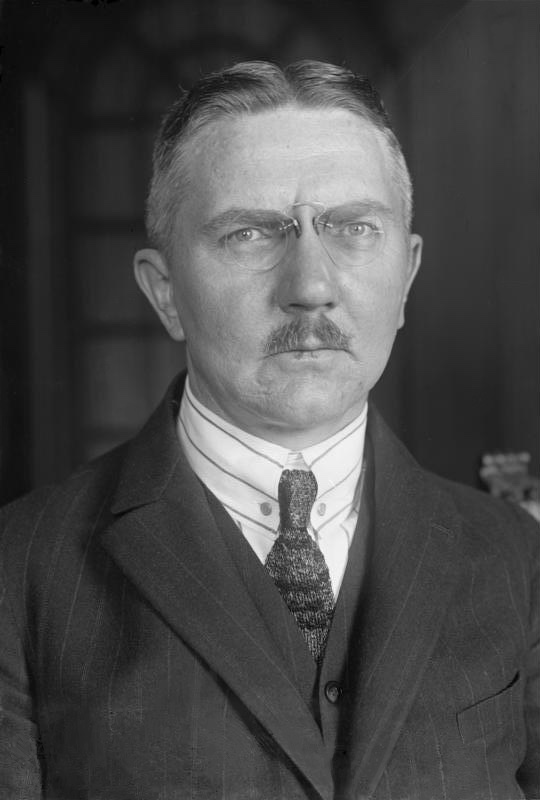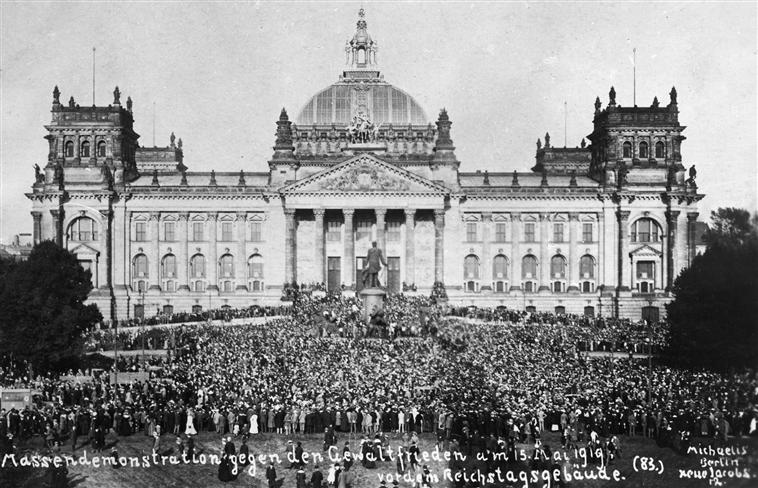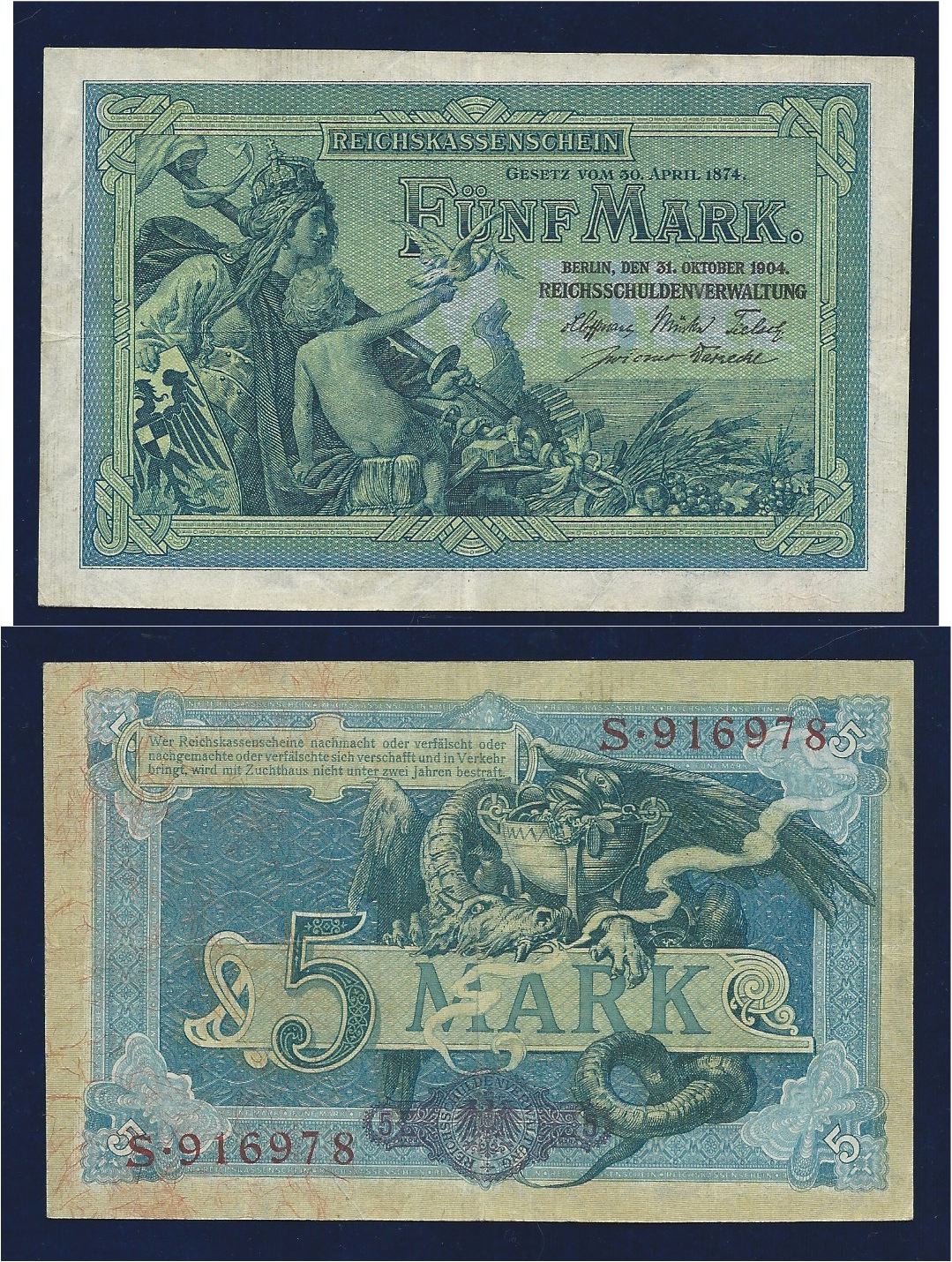|
Deutsche Golddiskontbank
The Deutsche Golddiskontbank (also Golddiskontbank, and abbreviated Dego) was a state-owned special bank founded in 1924 to promote German export industry by financing raw material imports. It was liquidated in 1945. The purpose of the Deutsche Golddiskontbank Reichsbank President Hjalmar Schacht founded the Goldnotenbank, the first name of the later Deutsche Golddiskontbank, on 19 March 1924 to draw foreign exchange to Germany by issuing shares to foreign banks. The Golddiskontbank also was given the right to issue notes, but it never used it. The bank saw itself not as a currency bank, but as a discount and credit bank. The primary tasks and goals of the Golddiskontbank were: To aid the restarting of the German economy by lending to support export trade and the purchase of raw materials and other goods; to generate the necessary funds for the Reich to pay for Treaty of Versailles reparations; and to ensure the stability of the German currency. The bank's main mission was to g ... [...More Info...] [...Related Items...] OR: [Wikipedia] [Google] [Baidu] |
Reichsbank
The ''Reichsbank'' (; 'Bank of the Reich, Bank of the Realm') was the central bank of the German Reich from 1876 until 1945. History until 1933 The Reichsbank was founded on 1 January 1876, shortly after the establishment of the German Empire in 1871. It was the central bank of Prussia, under the close control of the Reich government. Its first president was Hermann von Dechend. Before unification in 1871, Germany had 31 central banks – the Notenbanken ("note banks"). Each of the independent states issued their own money. In 1870, a law was passed that forbade the formation of further central banks. In 1874, a draft banking law was introduced in the ''Reichstag'', the federal legislature of the German Reich. After several changes and compromises, the law was passed in 1875. Despite the creation of the Reichsbank, however, four of the ''Notenbanken'' – Baden, Bavaria, Saxony and Württemberg – continued to exist until 1914 . The Reichsbank experienced both ... [...More Info...] [...Related Items...] OR: [Wikipedia] [Google] [Baidu] |
Hjalmar Schacht
Hjalmar Schacht (born Horace Greeley Hjalmar Schacht; 22 January 1877 – 3 June 1970, ) was a German economist, banker, centre-right politician, and co-founder in 1918 of the German Democratic Party. He served as the Currency Commissioner and President of the Reichsbank under the Weimar Republic. He was a fierce critic of his country's post-World War I reparations obligations. He served in Adolf Hitler's government as President of the Central Bank (''Reichsbank'') 1933–1939 and as Minister of Economics (August 1934 – November 1937). While Schacht was for a time feted for his role in the German "economic miracle", he opposed elements of Hitler's policy of German re-armament insofar as it violated the Treaty of Versailles and (in his view) disrupted the German economy. His views in this regard led Schacht to clash with Hitler and most notably with Hermann Göring. He resigned as President of the Reichsbank in January 1939. He remained as a Minister-without-portfolio, and ... [...More Info...] [...Related Items...] OR: [Wikipedia] [Google] [Baidu] |
World War I Reparations
Following the ratification of article 231 of the Treaty of Versailles at the conclusion of World War I, the Central Powers were made to give war reparations to the Allied Powers. Each of the defeated powers was required to make payments in either cash or kind. Because of the financial situation in Austria, Hungary, and Turkey after the war, few to no reparations were paid and the requirements for reparations were cancelled. Bulgaria, having paid only a fraction of what was required, saw its reparation figure reduced and then cancelled. Historians have recognized the German requirement to pay reparations as the "chief battleground of the post-war era" and "the focus of the power struggle between France and Germany over whether the Versailles Treaty was to be enforced or revised." The Treaty of Versailles (signed in 1919) and the 1921 London Schedule of Payments required Germany to pay 132 billion gold marks ll values are contemporary, unless otherwise stated in reparations ... [...More Info...] [...Related Items...] OR: [Wikipedia] [Google] [Baidu] |
German Gold Mark
The German mark (german: Goldmark ; sign: ℳ) was the currency of the German Empire, which spanned from 1871 to 1918. The mark was paired with the minor unit of the pfennig (₰); 100 pfennigs were equivalent to 1 mark. The mark was on the gold standard from 1871–1914, but like most nations during World War I, the German Empire removed the gold backing in August 1914, and gold and silver coins ceased to circulate. After the fall of the Empire due to the November Revolution of 1918, the mark was succeeded by the Weimar Republic's mark, derisively referred to as the Papiermark ("Paper mark") due to hyperinflation in the Weimar Republic from 1918–1923. History The introduction of the German mark in 1873 was the culmination of decades-long efforts to unify the various currencies used by the German Confederation.pp 205-218 https://books.google.com/books?id=GrJCAAAAIAAJ&pg=PA205#v=onepage&q&f=false The Zollverein unified in 1838 the Prussian and South German currenc ... [...More Info...] [...Related Items...] OR: [Wikipedia] [Google] [Baidu] |
Pound Sterling
Sterling (abbreviation: stg; Other spelling styles, such as STG and Stg, are also seen. ISO code: GBP) is the currency of the United Kingdom and nine of its associated territories. The pound ( sign: £) is the main unit of sterling, and the word "pound" is also used to refer to the British currency generally, often qualified in international contexts as the British pound or the pound sterling. Sterling is the world's oldest currency that is still in use and that has been in continuous use since its inception. It is currently the fourth most-traded currency in the foreign exchange market, after the United States dollar, the euro, and the Japanese yen. Together with those three currencies and Renminbi, it forms the basket of currencies which calculate the value of IMF special drawing rights. As of mid-2021, sterling is also the fourth most-held reserve currency in global reserves. The Bank of England is the central bank for sterling, issuing its own banknotes, and ... [...More Info...] [...Related Items...] OR: [Wikipedia] [Google] [Baidu] |
Bank Of England
The Bank of England is the central bank of the United Kingdom and the model on which most modern central banks have been based. Established in 1694 to act as the English Government's banker, and still one of the bankers for the Government of the United Kingdom, it is the world's eighth-oldest bank. It was privately owned by stockholders from its foundation in 1694 until it was nationalised in 1946 by the Attlee ministry. The Bank became an independent public organisation in 1998, wholly owned by the Treasury Solicitor on behalf of the government, with a mandate to support the economic policies of the government of the day, but independence in maintaining price stability. The Bank is one of eight banks authorised to issue banknotes in the United Kingdom, has a monopoly on the issue of banknotes in England and Wales, and regulates the issue of banknotes by commercial banks in Scotland and Northern Ireland. The Bank's Monetary Policy Committee has devolved responsibility for ... [...More Info...] [...Related Items...] OR: [Wikipedia] [Google] [Baidu] |
Pfandbrief
The Pfandbrief (plural: Pfandbriefe), a mostly triple-A rated German bank debenture, has become the blueprint of many covered bond models in Europe and beyond. The Pfandbrief is collateralized by long-term assets such as property mortgages or public sector loans as stipulated in the Pfandbrief Act. Total volume outstanding in Pfandbriefe was EUR 806 billion as at end-2008.Deutsche Bundesbank Pfandbrief bonds make up the third largest segment of the German bond market after public sector bonds and unsecured bank debt. A survey of European Pfandbrief-like products was issued in 2005 by the Bank for International Settlements; the International Monetary Fund in 2007 issued a study of the covered bond markets in Germany and Spain, while the European Central Bank in 2003 issued a study of housing markets, addressing also mortgage markets and providing a two-page overview of current mortgage systems in the EU countries. History The roots of the German Pfandbrief system reach back to the ... [...More Info...] [...Related Items...] OR: [Wikipedia] [Google] [Baidu] |
Banks Of Germany
A bank is a financial institution that accepts deposits from the public and creates a demand deposit while simultaneously making loans. Lending activities can be directly performed by the bank or indirectly through capital markets. Because banks play an important role in financial stability and the economy of a country, most jurisdictions exercise a high degree of regulation over banks. Most countries have institutionalized a system known as fractional reserve banking, under which banks hold liquid assets equal to only a portion of their current liabilities. In addition to other regulations intended to ensure liquidity, banks are generally subject to minimum capital requirements based on an international set of capital standards, the Basel Accords. Banking in its modern sense evolved in the fourteenth century in the prosperous cities of Renaissance Italy but in many ways functioned as a continuation of ideas and concepts of credit and lending that had their roots in the anc ... [...More Info...] [...Related Items...] OR: [Wikipedia] [Google] [Baidu] |
1945 Disestablishments In Germany
1945 marked the end of World War II and the fall of Nazi Germany and the Empire of Japan. It is also the only year in which nuclear weapons have been used in combat. Events Below, the events of World War II have the "WWII" prefix. January * January 1 – WWII: ** Germany begins Operation Bodenplatte, an attempt by the ''Luftwaffe'' to cripple Allied air forces in the Low Countries. ** Chenogne massacre: German prisoners are allegedly killed by American forces near the village of Chenogne, Belgium. * January 6 – WWII: A German offensive recaptures Esztergom, Hungary from the Russians. * January 12 – WWII: The Soviet Union begins the Vistula–Oder Offensive in Eastern Europe, against the German Army. * January 13 – WWII: The Soviet Union begins the East Prussian Offensive, to eliminate German forces in East Prussia. * January 16 – WWII: Adolf Hitler takes residence in the ''Führerbunker'' in Berlin. * January 17 ** WWII: The Soviet Union occupies Warsaw, Pola ... [...More Info...] [...Related Items...] OR: [Wikipedia] [Google] [Baidu] |







